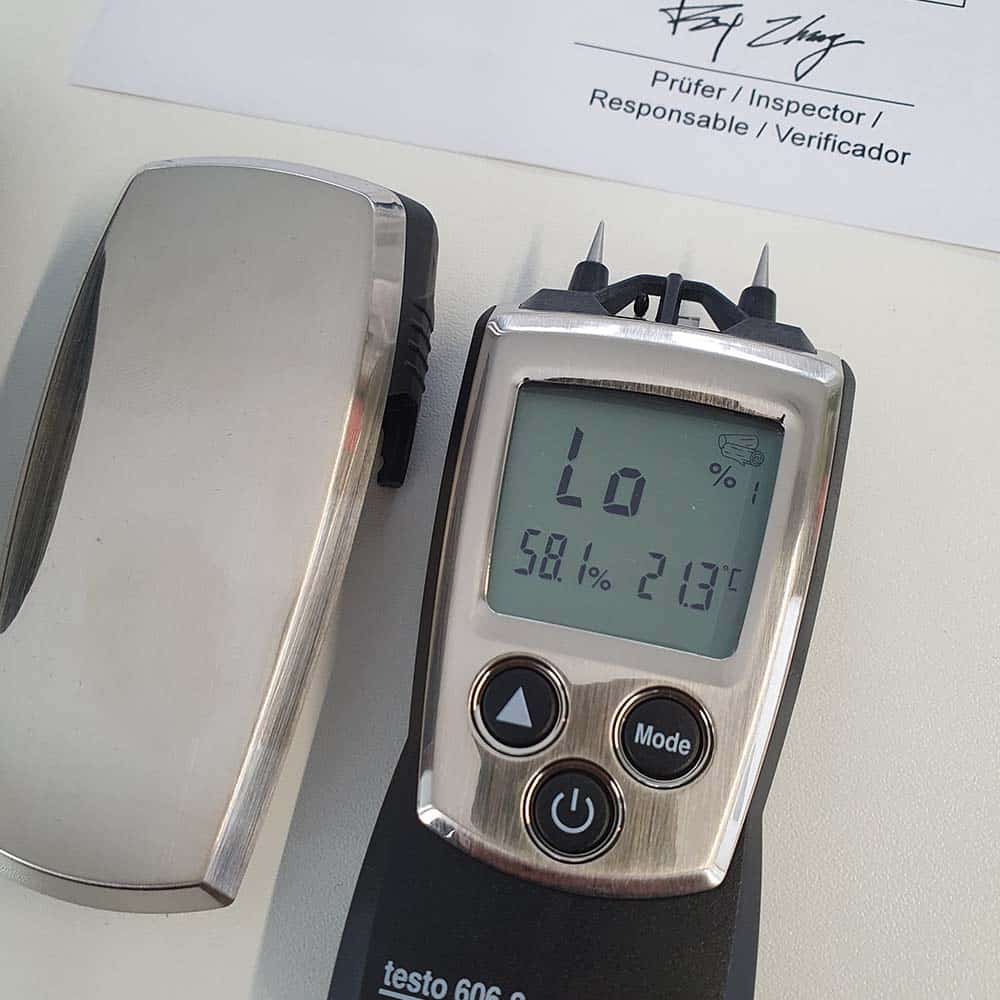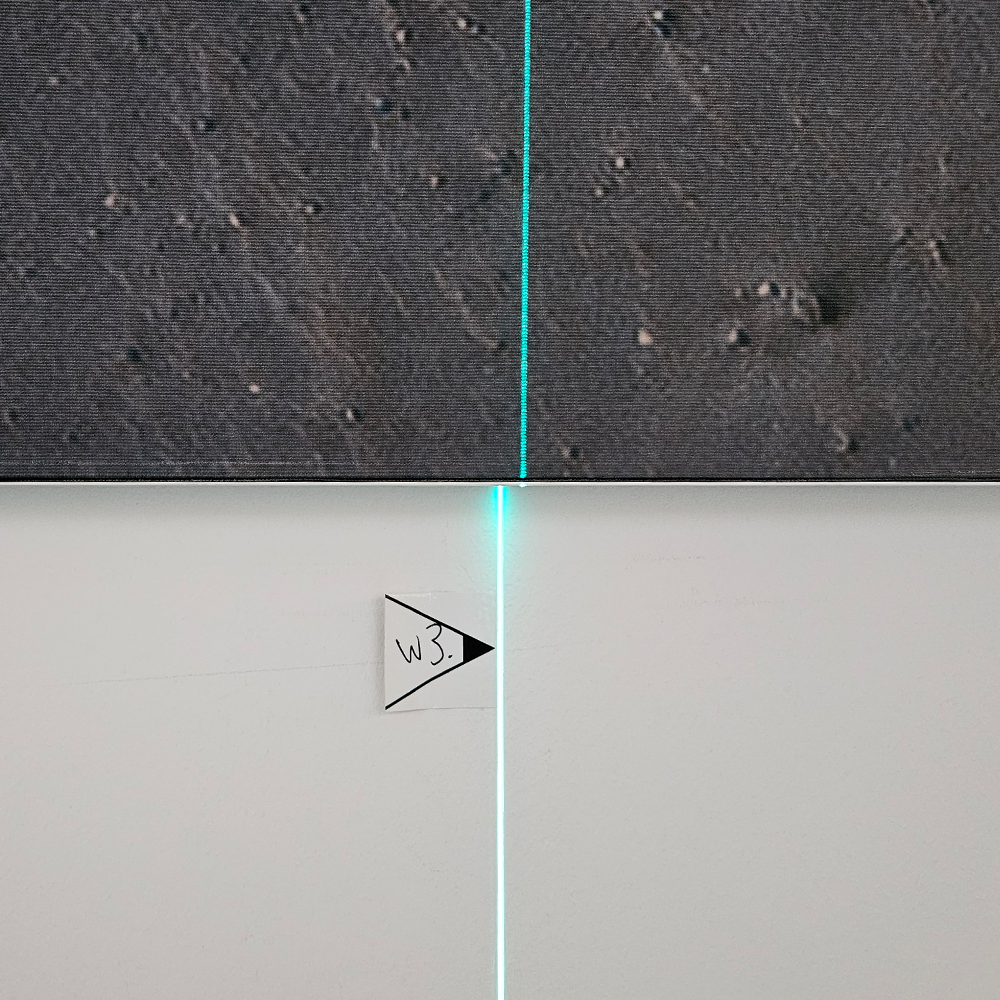Moisture measurement to demonstrate moisture problems.
If a building stores clothing, you certainly don’t want clothing to smell musty. But then what if you think it’s too humid? Then you want to determine if that is the case, whether you have moisture problems. Then you also want to find out what is causing it, and a moisture measurement can provide insight. Many times ventilation is part of the problem: poor ventilation causes air to become too humid. But how does the moisture get there?
Moisture problems can damage the structure of a building, affect stored goods but also adversely affect the health of occupants. In this blog, I will first briefly discuss what moisture problems are and what the possible causes are. Then I will discuss the different methods of moisture measurement and how they can be applied in buildings. Next, we have a real-life case where a moisture measurement adds to the discussion between tenant and landlord as to whether or not a situation meets good housekeeping standards.
What are moisture problems?
Moisture problems are problems caused by excessive humidity in a building. Moisture can enter the building in various ways, such as through the roof, walls or floors. If moisture is not detected and treated in time, it can lead to serious damage to the building’s structure, such as wood rot or concrete rot. Moisture can also lead to mold growth, which negatively affects air quality and occupant health.
Possible causes of moisture problems
There are several causes of moisture problems in old buildings, including:
Leaks: Leaks in the roof, walls or floors can lead to moisture problems. Water can enter the building and cause moisture problems.
Capillary uplift: This is a natural process in which water is drawn up through small openings in the walls. This can lead to moisture problems in the walls.
Condensation: Condensation can occur when the temperature in the building is too low relative to the humidity. This can lead to moisture problems in the floors and walls.
Measurement methods, moisture measurement.
There are several methods for measuring humidity levels in old buildings.
- Visual inspection
A visual inspection is a method of detecting moisture problems by inspecting the walls, floors and roof for damp spots and/or mold. This method is especially suitable for detecting moisture problems that are already visible. For example, if mold is growing on the wall or if moisture spots can be seen. However, it is important to note that moisture problems are not always visible. For example, there may be moisture problems behind a wall or in the floor without being visible. In that case, a visual inspection may not provide sufficient information. - Building moisture measurement: often used to measure the moisture content of materials in a building. This involves the use of special equipment such as a moisture meter. This method is based on the measurement of the dielectric constant, a material property that is highly dependent on moisture content. This method measures only the moisture in the top layer of the material to be examined up to several centimeters and results in the indication moist or not moist. These are the well-known moisture meters with the advantage of allowing many measurement points in a short period of time. For a leak survey, the method is a proper and proven technique.
- Hygrometer: a hygrometer is a device that can measure the humidity in a room. This is particularly useful for determining whether excessive humidity is present. After all, excessive humidity can lead to condensation and moisture problems
Readings
The table below shows the ratio of the moisture of materials in relation to the relative humidity should be measured:
| Material | RH = 40% | RH = 65% | RH = 95% |
| Limestone | 2 | 4 | 8-12 |
| Concrete | 2-3 | 3-4 | 8 |
| Softwood | 2-3 | 4-5 | 12-15 |
| Cement plaster | 0,5 | 1 | 4 |
| Brick (wall) | 5 á 12 % | 12 % | > 15 % |
| Rockwool | 0 | < 0,1 | < 0,1 |
| PS foam | 0 | 0 | <0,2 |
A moisture percentage in building materials becomes harmful if it exceeds the values listed below:
| Material | Average moisture percentage | Harmful moisture percentage |
| Humidity | 40-60 % | > 60 % |
| Brick (wall) | 5 á 12 % | > 15 % |
| concrete | 2,5 % | > 15 % |
Practice
We recently measured a property where the tenant was wondering if it was too damp. In particular, there is doubt about the basement: the tenant thinks there is leakage from groundwater there.
We measured more than 100 measurement points in different materials. The pictures below show that in two places, where you would expect moisture, that is not always the case. Apparently, there are also traces of an excessively damp situation from the past: in stucco, a moisture percentage of 0.5% at an RH of 40% is common, so the measurement of 0.4% at an RH of 45% is not indicative of a problem.
But in the photo below, another spot measures12.6% at an RH of12.6%.
That’s too high a value for plaster, though. With the measurement, we found excessive moisture in more than 10 places. The humidity is not too high, but the material humidity is. These spots concentrate around facade and roof. With this, we were able to demonstrate that on the exterior facade and roof, much of the stucco and cement joints on the inside are too damp. So there is leakage or moisture penetration.
A next step is to analyze the building structure to determine what might be causing it, but that was beyond the scope of this study.
Thus, if there are question marks about the air quality or condition of the property, a simple moisture measurement can help: it makes subjective observations objective, documents and thus provides an informed basis for further steps.
^Justus Slaakweg and Henri Lintsen

























